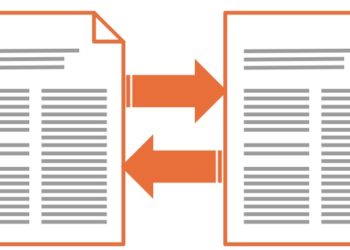The Manuscript Exchange Common Approach (MECA) was established as a NISO Recommended Practice in the summer of 2020. In the past year, the newly formed Standing Committee has been increasing awareness and uptake of the recommended practice for transferring scholarly manuscripts between journals. The MECA committee is considering possible enhancements, such as adoption of the new Peer Review Taxonomy initiative and an API option to improve communications during manuscript transfers.
Recently, I sat down with MECA chairs, Stephen Laverick, Business Development Manager at Typefi Systems and Senior Associate at Maverick Publishing Specialists, and Tony Alves, SVP of Product Management at HighWire Press – along with one of the original MECA creators, Joel Plotkin of eJournalPress (EJP) – to get a debrief on what MECA aims to achieve and what’s planned for the future.

Tell me about the Manuscript Exchange Common Approach (MECA) – what problems would be solved if we followed this new set of recommendations?
Tony Alves: Two specific workflows precipitated the formation of MECA, focused on reducing the effort of authors during the submission process, and allowing reviewers to “reuse” reviews. Specifically, MECA is focused on:
- Cascading workflows, where articles submitted to a journal are transferred to another journal within a publisher’s family of journals (an effort by publishers to not lose good research to other publishers), and
- Preprint servers, and the desire for both preprint servers and publishers to be able to push articles from preprint servers to journals and vice versa.
Joel Plotkin: Back in 2004, EJP first worked with Nature to transfer (or cascade) rejected manuscripts from one journal to another. Fast forward 17 years and this is much more prevalent, both within publishers and across publishers. The problem we face is that each submission platform or vendor required custom code to facilitate the export/import of articles in the transfer process. This, and the other use case Tony described, led the team to believe there must be a better way – a standards-based way of transferring manuscripts, files, and associated data between journals.
Stephen Laverick: Different journals within the same publishing house might use different submission systems. This is actually quite common, especially when journals move from one publisher to another — they often seek to keep their current system. In addition, we have seen societies and publishers create “consortiums,” where journals within the same discipline published by different publishers (society, university, and commercial publishers) want to exchange papers across their network.
Tony Alves: That’s right. Consider the Cell Biology Transfer Network, which consists of Journal of Cell Science (JCS), Journal of Cell Biology (JCB), and Molecular Biology of the Cell (MBoC). Each are published by different organizations with different submission systems, integrated via the Cell Biology Transfer Network.
Joel Plotkin: Review Commons takes this concept one step further, where all submission and peer-review work occurs in one system, using MECA principles to empower the author to send both the manuscript and reviews to their desired journal. Time will tell if both models should co-exist, or if one is better than the other.
What is the thrust of the MECA recommended practice?
Tony Alves: The MECA Recommended Practice (RP) is a documented methodology describing how to create a package of computer files for a manuscript and how to transfer the contents of that package in an automated, machine-readable way.
Stephen Laverick: The vision is to establish a common, easy to implement protocol for transferring research articles from one system to another, so that these different systems do not have to develop multiple, pairwise solutions for each and every relevant system.
If all publishers adopted MECA principles, this would reduce the friction faced by authors who are asked to repeat tasks and duplicate efforts when they are rejected at one journal and decide to submit elsewhere.
Transferring a paper between publishers / submission systems doesn’t happen often, does it? How extensive is this issue?
Stephen Laverick: Most publishers use multiple submission systems and when publishers acquire journals, those journals often do not want to change to a new system (loss of historical data, resistance to change by editors).
Joel Plotkin: Over the course of 17 years, eJournalPress probably implemented 7-10 different ways of transferring manuscripts across vendors and platforms. While the transfer of manuscripts across publishers definitely occurs, there were two historical barriers:
- Technology: Each journal to journal (or vendor to vendor) transfer required some level of coding or configuration.
- Philosophy: Societies, publication committees, editors-in-chief, and publishers must recognize that even though publishing is competitive in nature, everyone shares the common goal of advancing science.
Establishing MECA as a shared standard would address the first issue and the second way of thinking is becoming much more prevalent.
Tony Alves: When I was at Aries Systems, we were working on several different projects to facilitate transfers between the different submission systems and Editorial Manager, AND we were working on different methods to transfer to and from different preprint servers and authoring systems. If there had been an agreed-upon approach, we could have just conformed to that approach and spent resources in less redundant ways.
Stephen Laverick: Transferring papers between publishers is not prevalent, in part, because we do not yet have a common approach. If all publishers adopted MECA principles, this would reduce the friction faced by authors who are asked to repeat tasks and duplicate efforts when they are rejected at one journal and decide to submit elsewhere. Studies show that saving researchers’ administrative time also saves cost across the supply chain – and wouldn’t it be great for the researcher if the industry made publishing easier?
Is this mostly an issue for high-impact scientific, technical, and medical journals? Less of a problem for the humanities and social sciences?
Tony Alves: This is an issue of making article transfers easier for authors and reviewers. I don’t see how high-impact journals are better served by MECA than any other journal or discipline.
Joel Plotkin: Tony is right. MECA equally benefits both STM and HSS journals, but as HSS journals may not have the same budgets as high-impact STM journals. MECA will lower the [cost] bar and empower HSS to transfer manuscripts if/as desired.
What happens if we do nothing? Why should publishers care?
Tony Alves: Publishers have been asking for easier ways to transfer manuscripts for years – and multiple solutions have been developed, which are inefficient. These different solutions end up only working between specific systems, aren’t extensible, and cannot be applied to new systems when adopted. Publishers also want to make it easier for authors to submit and to make reviews transferable.
Joel Plotkin: MECA reduces the “friction” of moving manuscripts around. Anytime friction can be reduced it makes it easier and faster to get where you are going — in this case, transferring manuscripts.
MECA is a bridge, and like a bridge, it makes transport more direct. It can save time and offer a more convenient method than other routes.
If we’ve reached the point of establishing a recommended practice with NISO, should we assume there is now sufficient buy-in?
Stephen Laverick: Getting exposure is difficult. It’s all very well us working to put these recommendations together, but if people don’t know about them, then they aren’t going to be able to implement them. In our day-to-day jobs, both Tony and I have come across instances where MECA could be used to create efficiencies in workflows but the organizations in question just weren’t aware that such a framework exists. We’ve increased our exposure since coming under NISO and we’re making further outreach efforts through various channels such as this blog post, but it’s a continuous process.
Tony Alves: The MECA RP was approved on June 26, 2020 and published on July 6, 2020. Most of the participating submission system providers have adopted MECA principles, though some variations persist. There are also preprint servers, like bioRxiv, medRxiv and SSRN, that have adopted MECA. The standing committee includes most of the original participants and we are tasked with promoting the MECA RP and increasing buy-in across stakeholders.
Are there new business opportunities available to content or technology providers?
Tony Alves: With a common practice in transferring articles, internal resources can be directed toward other processes that better enrich content, improve author and reviewer experiences, and improve research quality. MECA is a bridge, and like a bridge, it makes transport more direct. It can save time and offer a more convenient method than other routes.
Joel Plotkin: Building on this easier path of travel, we may see new innovations and trends result that we never considered. For example, more tightly-focused journals that are highly targeted to specific topics or niche areas of research, as manuscripts are rejected or reclassified from broader journals, and then transfer to the more focused journals. Additionally, I think we are starting to see successors to JANE, designed to help authors decide where to transfer their manuscripts.
So, what comes next for MECA?
Stephen Laverick: The NISO MECA committee meets monthly and to coordinate efforts around promotion and education of the current Recommended Practice; evolution of the specification to include updated protocols and technology; non-English language support; integration with efforts by JATS4R, STM Review Taxonomy, and DocMaps initiatives; and support of additional use cases. Please reach out if you’d like to be involved.



